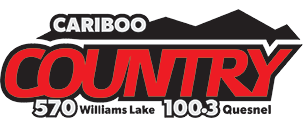A delegation from Interior Health had a long discussion with the Williams Lake City Council in Tuesday, June 10’s council meeting.
The delegation gave an update on the current state of the toxic drug crisis, went over their strategies and services to help with the crisis, and discussed possible future options.
The Health Authority issued an Overdose Alert in late May, which is still in effect until June 12, at this time.
Dr. Andy Delli Pizzi showed data from Interior Health and across the province between 2016 and 2024 on illicit drug toxicity. Dr. Delli Pizzi said the illicit drug toxicity is in the top three leading causes of death in the ages of under 19 years of age, between 19-39 years of age, and 40-59 years of age, in Interior Health’s region.
“I really want to acknowledge that we present these numbers with sadness,” Dr. Delli Pizzi said. “These ‘numbers’ represent people, loved ones, family, friends, community members and the loss impacts us all.”
Dr. Delli Pizzi noted that illicit drugs is only the third leading cause of death in youths under the age 19 and 20, and there hasn’t been an overdose death under the age of 20 since 2017. Dr. Delli Pizzi did say, that in adolescent mental health surveys across the Cariboo–Chilcotin and the Thompson Okanagan–Shuswap areas, youth mental health has “demonstrates declines” in the youth. Dr. Delli Pizzi said that addressing the decline is a “priority for health and society to address,” and is a necessary step in preventing longterm addictions in the community.
He later showed that in the Cariboo–Chilcotin, the leading deaths from illicit drugs is in men, and people between the ages of 19-39. The doctor also showed that between 2016–2024, the Cariboo–Chilcotin region has both reached and surpassed, and stayed above the unregulated drug related deaths in the region compared to the rest of the province. With the province reaching 40 in 2024, and the Cariboo–Chilcotin in the 60s. The highest amount being 93 for the Cariboo in the year 2022.
Dr. Delli Pizzi commented that when looking into future possibilities for prevention and harm reduction, the services need to be “tailored” to meeting the most common modes of drug consumption, which is smoking, but also to the negative stigmas surrounding addictions and overdoses.
“The majority of people who die of overdoses due while using drugs in private residences,” said Dr. Delli Pizzi. “When we look at the data for Williams Lake since 2024, we see that an even higher proportion of deaths occur in private residences than across the province too.”
Dr. Delli Pizzi talked also on the impact the drug crisis has historically on First Nations and Indigenous peoples, and still currently. In Interior Health’s region made up one out six deaths of the toxic drug crisis in 2024.
Richard Harding, Chief Operating Officer for Clinical Operations for Interior Health spoke on the strategic approaches that Interior Health is doing to look at prevention and harm reduction. Harding emphasised that Interior Health is looking at health “as fluid in people’s lives”, and while trying to take actions to ensure people’s safety.
Harding also said Interior Health has been working in collaboration with the First Nations Health Authority, on ways to engage and give access to services that are distinction-based in Indigneous cultures.
“We’re also developing and building similar strategies,” said Harding. “We also look to ensure that clients received respectful supports and services that are free of stigma and discrimination, and ensure that dignity of clients in health, in the health service environment is safe from physical and emotional harm.
The wraparound services in Williams Lake were shown next. Karen Cooper, Executive Director of Clinical Operations for Interior Health West, said the Health Authority has expanded their services in Williams Lake and surrounding areas, but they are still looking to continually expand.
“Interior Health as invested $3.1 million to support mental health, substance use, and harm reduction services in Williams Lake,” Cooper said.
Cooper showed that many of the expanded services Interior Health has implemented are not only for detox and abstinence, they are trying to build connections to and for the patients.
“The opposite of addiction isn’t abstinence, it’s connection,” said Cooper. “We’re hoping that with connections, people can build a sense of sustainability and community. That’s why we have a continuum of services with the intention to connect folks, and keep them connected to support them along wherever they are at in their journey.”
Overdose prevention was spoke about finally. The idea of a safe consumption site in Williams Lake. Dr. Delli Pizzi says that a safe site and more preventions services are needed in the Lake City.
“ Based on the impacts of the toxic drug crisis, there’s a high need for overdose prevention services in Williams Lake,” said Dr. Delli Pizzi. “Overdose prevention services save lives. They support the safe discard of needles. There’s less public drug use and reduction of needle sharing, um, and less transmission of its important infections like HIV and Hepatitis C. These services are, are necessary, but they’re not sufficient. They’re only one component in a continuum of care, to support people who use substances and support the community.”
Dr. Delli Pizzi, and all the other delegates for Interior Health, emphasized the need to find a way to bring overdose prevention services that “fit the Wililams Lake community.” Suggestions of a Mobile Site, akin to one in Pentiction. Dr. Delli Pizzi strongly suggested implmenting a mobile prevention services as they are more flexible and adaptable to a community’s changing needs.
Each councillor had a chance to speak on the toxic drug crisis and issues present in the communities.
Councillor Sheila Boehm was critical that “not enough or nothing” was getting done in and for Williams Lake. Her comments were not a direct attack on Interior Health, she directed her statements to be on how Williams Lake does not receive or get any of the services the Lower Mainland is getting faster, when there is a need in the Northern region of the province.
Councillor Jazmyn Lyons, asked the Interior Health delegates on how the City inform the public against the stigmas of Safe Consumption Sites. She also wanted to find ways to make the public more aware of the Lifeguard App, a free app that is activated by a drug user that sends an alert that will bring emergency responders to the person’s location.
Councillor Scott Nelson was concerned on a few matters when it comes to wraparound services in Williams Lake. He first wanted to know whether Interior Health has any knowledge on if addicts and repeat offenders from East Hastings in Vancouver have come to Williams Lake. Richard Harding, and Karen Cooper said that there has been “none from [their] knowledge.”
Nelson also asked Interior Health on the need for involuntary care beds, for patients who need to be “removed from the public” as they pose a “danger to themselves and everyone.” Nelson read a letter from the Premier’s office that stated that Health Authorities could have involuntary care beds in communities, and asked if Interior Health could look into if there is a way to bring a local service for involuntary care in Williams Lake and the region. Richard Harding said that he will “revise” the letter with the directors in Interior Health, and report back on if that is an option for the community. Though, Harding cautioned that involuntary care beds “are not designed nor are a good permenant option” for communities.
The Council unanimously approved the report from the Interior Health Delegation, and will continue to “have talks” with them
Something going on in the Cariboo you think people should know about?
Send us a news tip by emailing [email protected].










